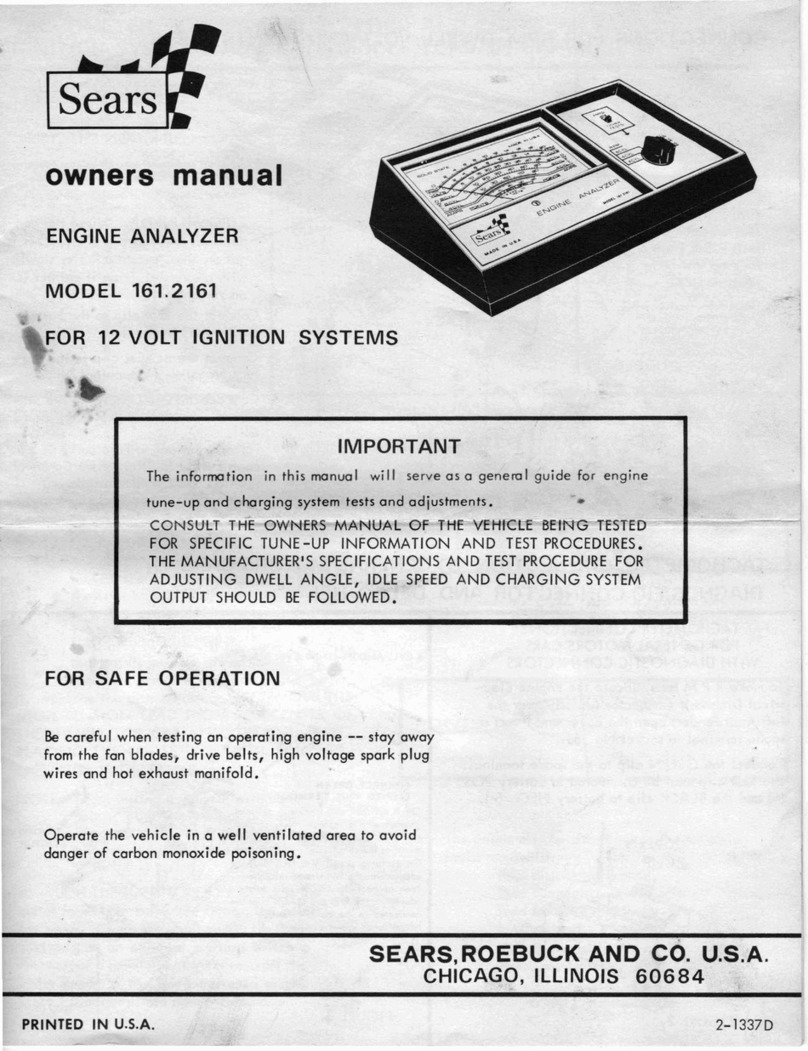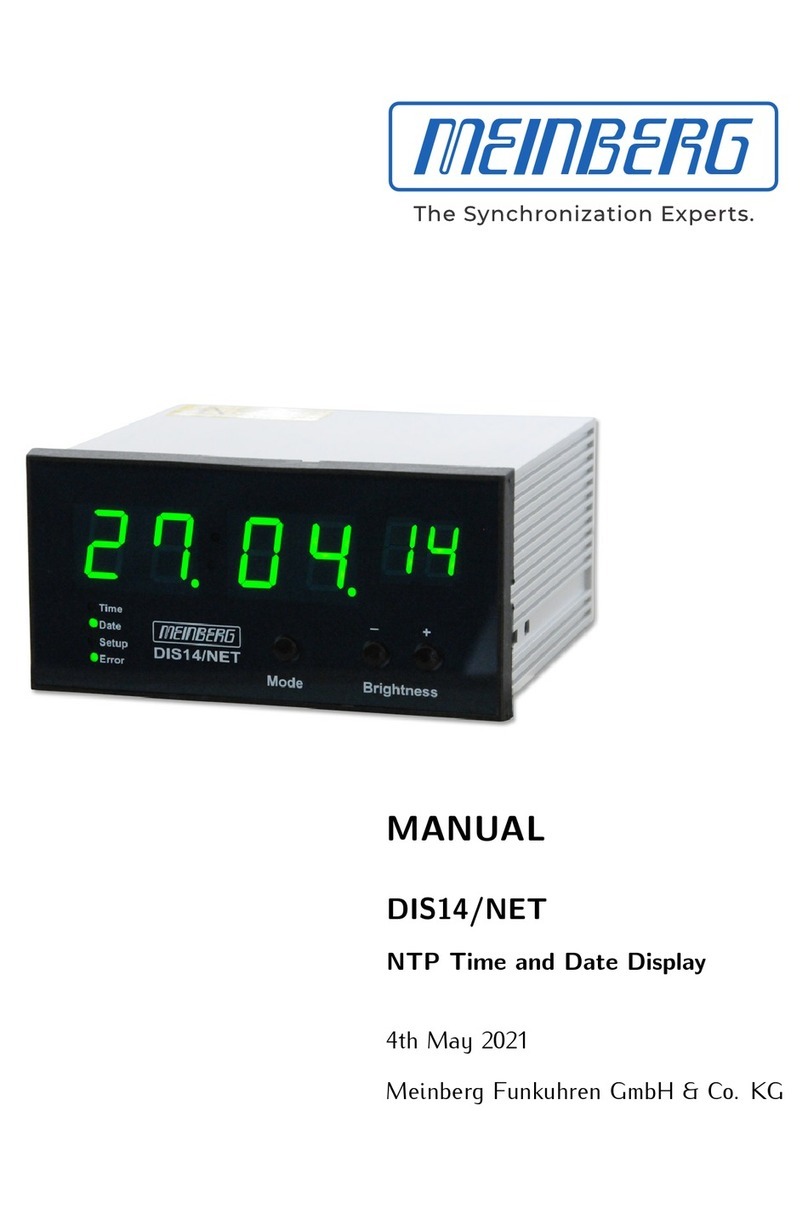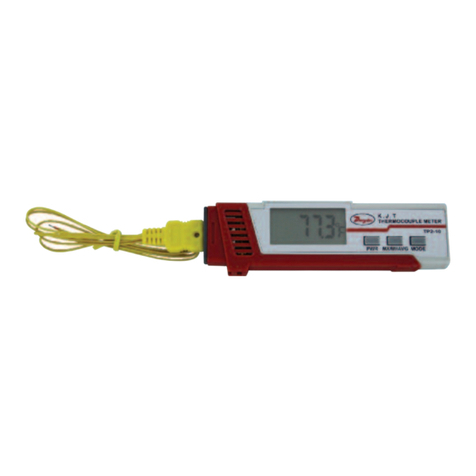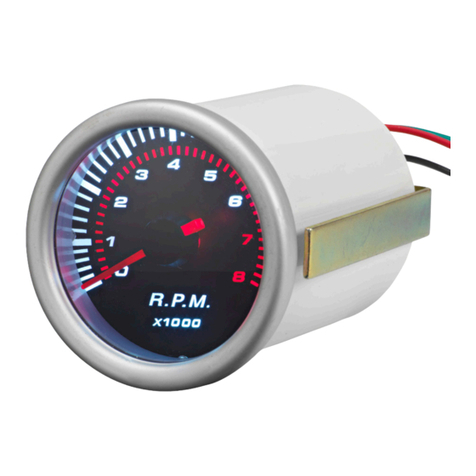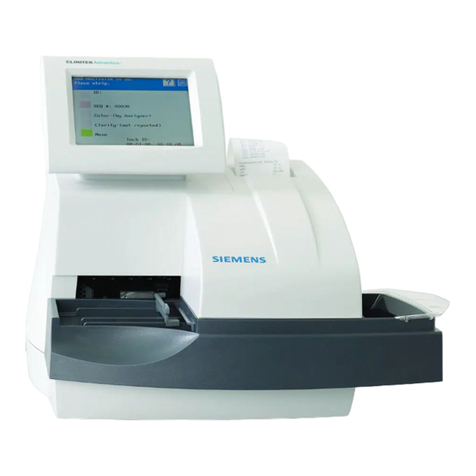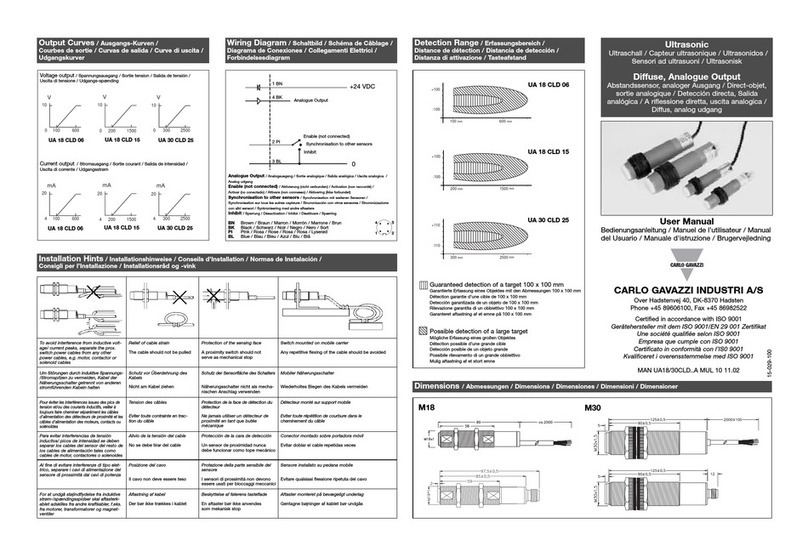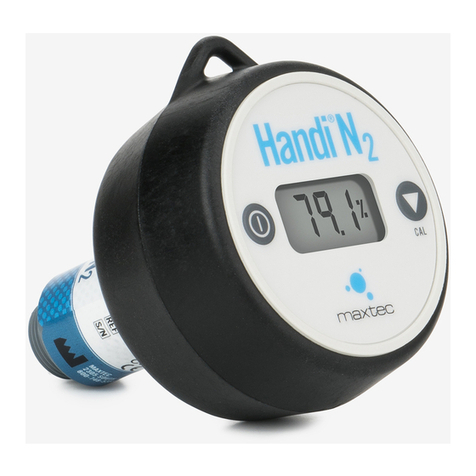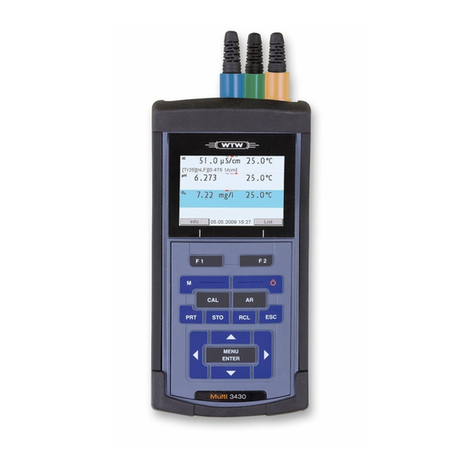Sears 161.216500 User manual

161~-216500
Tach/DwelllVoltmeter
Caution:
Read Rutes For
Safe
Operefien
and
Complete
OPERATING INSTRUCTIONS
S-AFETY RULES

TABLE OF CONTENTS
PAGE
SOURCES FOR SERVICE INFORMATION..................... ....•. .. 1
WARRANTY STATEMENT ..•..•..•...•...•.........•............•.
RULES FOR.'SAFE AUTOMOTIVE TESTING ..........•..... ; . . . . • . . . . . . 2
GENERAL INSTRUCTIONS . . . . . . . . . . . . . . . . . . . . . . . . . . . . . . . . . • . . . . . . 3
TACHOMETER CONNECTIONS .•....•.•...••.•...•.•.••••.•.•...• '. 3
G.M. H.E.!. Ignition Systems •••••••.•.••••••••••••••••••••••••••• 3
G.M. Diagnostic
Ccnnectors •.•••..••••••••••••••••••• _. • • •• • • • •
3
Ford Ignition Systems .••......•••.••••..•..••.•••••••.•.••••••
-4
Chrysler ond American Motors Ignition Systems ...•..•...•..•.......
-4
Tachometer - Engine RPM Measurement Procedure. . . . . • . . . . . . . . . . • 5
BREAKER POINTS RESISTANCE TEST, ...•...•.....•.•........... .-.. , • 5
BREAKER POINTS DWELL TEST AND ADJUSTMENT ...•. '....•. , ..• , .. , . , 5
Dwell Measurements , , , •.......•...... , . , , . , 6
Dwell Adjustments - Bt-eolce.- Poim Syste;";1S••.•••••• _• _• _ ••• _ • • • • • •
6
Dwell Reo.dings- Electronic Ignilion Sxstems. • . . • . • . . . . . . . . . . . . . . . . 6
ENGINE TIMING ~ •.... , , . . . • . . . • . . . • • • . . • . . . . . . . . • . . . • . . • . . . . . . 7
Procedure .. " ......•.........•...............•............ , . 7
DWELL VARIATION TEST ........•... , ........•.......• , . • . . . . . . . . 8
IDLE SPEED AND CARBURETOR ADJUSTMENT .......•..... , ..••... , . • 9
VOLTS - PRELIMINARY CHECKS .. , -. . . . . . . . . . . . . . • . . • . . . . • 9
CRANKING VOLTS TEST .•.. : • . . . . . . • . . . • . . • . • . . . . . .. . . . . . • • . . • . . 10
CHARGING SYSTEM VOLTS TEST. • . . • . . • . . . . . . • . . . . . • • . • . . . . . . • • . • 10
POINTS - LOW VOLT AGE TEST ,.................. 10
OTHER APPLICATIONS , .•.• , .•. , . , .. , , , •
11
REPLACEMENT PARTS... .............•..•••.•••.•.....••..••...• 12
ORDERlNG REPAIR PARTS... .• .• • •• •• ••••• •.•. .••• . •••• • 'BACK COVER

IMPORTANT
The information in this manual will serve as a general guide for engine tune·
up and charging system testsand adjustments.
CONSULT THE VEHICLE SERVICE MANUAL FOR SPECIFIC TUNE·UP INFORMA·
TION AND TEST PROCEDURES. ALWAYS FOLLOW THE MANUFACTURER'S
SPECIFICAnONS AND TEST PROCEDURES FOR ADJUSTING DWELL ANGLE,
IDLf SPEED
sa
:::>
CHARGING SYSTEM OUTPUT. ESPEOAllY VEHIClES WITH
J.\Oi)ERt-. 2....=ciRO iIe IGNITION AND EJ.\1SS1O CONTROLS. DO NOT
ATTEMPT TO SERVICE VEHICLE WITHOUT MANUFACTURER'S INSTRUCTIONS.
SOURCES FOR SERVICE INFORMATION
The following is a lis! of publishers who have service manuals 10<your specific vehicle
at
nominal cost. Write to them
for availability and prices, specifying the make, style. and IJlOdd
year
of your vehicle.
A.
E.
A.
Tune-Up
Cha.....
k~
3.eonc:.sm.
I
JO' ".
22Do SL
s....w.e
1C:
Execu-ive Pfazo &ilo
ins
Oak Brook.1lGnois 60521
fl:::i:;::Jr's
-_""""=-
ie=:c::K ~
:!!:
s._:_
s-"",.
Sew-y~ .._
::n.
l'Xl~
Notional Service
Ooio
Book
Notional
Automotive""Servlce,
Inc......
Dill. Glenn
Mitchell
Manuals, Inc.
Soxl~
5=:li=g:-
Ccih:r..io
921 10
Chilton's Auto Repair Manuel
Chlron
Compony
.5X-
== ~
S::ress
GMDio;;~=
~=&=I:;.::i
GM DR
Manucl-eoc_=
P.O. Sox 1185
~~"
5=roi:=
::~Oep1.
~~A.Ye.
r
Scuthheld,
MichisClD ~ ~......." ~
48015
- - b::=l:
:xa _
e:J
=c,
x.xU""5:
90-DA Y WARRANTY
[
L
THIS WARRANTY GIVES YOU SPECIFIC LEGAL RIGHTS, AND YOU MAY ALSO HAVE OTHER RIGHTS
WHICH VARY FROM STATE TO STATE.
SEARS, ROEBUCK AND CO.
DEPARTMENT 698/731A
SEARS TOWER
CHICAGO, IL 60684
IF, WITHIN 90 DAYS FROM THE DATE OF PURCHASE, THIS AUTOMOTIVE TEST INSTRUMENT FAILS
DUE TO A DEFEO IN MATERIAL OR WORKMANSHIP, RETURN IT TO THE NEAREST SEARS STORE
THROUGHOUTTHE UNITED STATES, AND SEARS WILL REPAIR OR REPLACE IT, FREE OF CHARGE.

4. When operating any test instrument from on
auxiliary batlery, connect a jumper wire between
the negative terminal of the auxiliary battery
and chassis ground on the vehicle under test for
negative ground systems.
for
posirve
grounO
systems, connect the jumper wire to the positive
terminal of the auxiliary battery and chassis
groun-d on the vehicle. When working in a gar-
age or other enclosed area, auxiliary battery
should be located at least 18 inches a bove the
floor to minimize the possibility of sparks igniting
gasoline vapors and causing on explosion.
RULESFOR SAFE AUTOMOTIVE TESTING
READ CAREFULLY
1. Read this Owner's Manual and these Rules for
Safe Automotive Testing carefully. Failure to
follow instructions and safety rules could result in
serious bodily injury
c
nd Zor damage to the
instrument.
2. Before starting the engine, set the parking broke
and place gear selector in NEUTRAL
on
standard
transmissions or PARKon automatic transmission.
3. The carbon monoxide in exhaust gas is highly
toxic. To ovoid asphyxiation, always operate
vehicle in a well-ventilated area. If vehicle is in
on enclosed area, exhaust should be routed
directly to the outside via leakproof exhaust
hose..
5. An automobile battery is capable of producing
very high currents. Therefore, exercise reason-
able core when working near the battery to
ovoid electrical connections through tools,
wristwatch, etc.
6. Avoid contact with battery electrolyte. It can eat
holes in clothing, burn skin and couse permanent
damage to eyes. Always wear splash proof
safety goggles when working around the
bot-
tery.
If
battery electrolyte is splashed
in
the eyes
or on skin, immediately flush the affected area
for 15 minutes with large quantities of dean
water. In ccse of eye contact, seek medical aid.
7. The gases generated by a charging battery are
highly explosive. Do not smoke or permit flame
or spark to occur near a battery at any time,
particularly when it is charging. Any room or
comportment containing charging batteries
should be well ventilated to prevent accumulo-
-tion of explosive gases. To ovoid sparks, do not
disturb the battery charger connections while
battery is charging, and always turn charger off
before disconnecting the battery clips. When
removing
Of
reconnecting battery cables, make
sure ignition
swiIdt and all accessories are
fumed off_
8_
Never odd acid to a battery once the battery
has been placed in service. Doing so may result
in dangerous spattering of electrolyte.
9. Keep hands, hair, necktie, loose clothing and test
leads well away from fan blade, fan belt, power
steering belt, air conditioner belt and other mov-
ing engine ports, as serious injury could result
from entanglement.
10_
Do
no1
cuch
boo exb£:us ~, ... dieter
or
high-vottage sparle plug and coil terminals. "" '''~ --~-
Spark voltages are not normally lethal but on
involuntary jerk of the hands or arms caused by
electrical shock may result in injury.
11. Never look- directly into carburetor throat while
engine is cranking or running. A sudden backfire
can couse serious burns.
12. To ovoid the possibility of a flash fire, do not
smoke or permit flame or spark to occur near
carburetor, fuel line, fuel filter, fuel pump or
other potential sources of spilled gasoline or
gasoline vapors.
13. Never remove radiator cop while the engine is
hot. Hot coolant escaping under pressure can
cause serious bums..
14_ The jock supplied with
the
vehicle should be used
on1y for changing wheels. Never crowl under cor
or run engine while vehicle is on [ock.
15. When making electrical test connections to the
vehicle, do not use the carburetor or other fuel
system components as a ground connection, as a
spark could ignite the gasoline vapors and couse
a fire or on explosion.
'-
l
i
tL- ~
l
2
,
I~

GENE~AL INSTRUCTIONS
Connections For RPM, Dw.ell, Volts and Points Tests
Connect the GREEN Clip to the distributor terminal
on the. ign'i,tion coil or TACH (tachometer) terminal
on
electronic
ignition systemsto measure RPM,
DWElL or POINTScondition.
Connect the GREEN clip to the battery Positive
(+)
terminaL to measure STARTINGAND CHARGING
VOLTAGES.
Connect the BLACKclip to a
secure
ground connec-
tion on the engine,
frame,
OT
alternator brocket
os
shown in Figure
1_The Bl.AOCdip should
!be
the,
last cennecflen nta.de, and ihe-fil'rlio be
disconnected.
rI
CAU.TION!
Avoid connecting directly
to
the
Battery
Negative
Terminal in
t~e
event that hydrogen
gases
are
present
which could explode
from
sparking
connections.
-
-
CONNECTIONS
FOR RPM, 0 VB!,.. VOlTS
AND POINTSTESTS
FIGURE'l
TACHOMETER CONNECTIONS
NOTE:
This analyzer is not designed to be used on
capacitive-discharge electronic ignition
.systemsto measure RPM and DWELL. If
50
used, it may indicate incorrect engine speed
ond dwell readings or may cause the
enqine to-run roughly or stall: However,
typically; o'hJ,ya very few import vehicles'
use th.is.type system. If you ere in doubt as
to the' type system.you have, refer to your
vehicle inanual.
TACHOMETER CONNECTIONS TO;
GENJRAl MOTORS DelCO HiGH ENERGY
IGNITION SYSTEMS'
On
4
cylinder and in-fine
6
cylinder engines. with
'0.
separate coil; connect the GREEN
clip
to
the open
TACH terminal as indicated in Fig.
2.
On the inte-
grllli coil
V-B
or
Y:6
HEI Systems, slide the adapter'
onto the TACH terminal as shown in Fig.
3.
Then
connect the GREENclip to the adopter.
The BLACKclip must be connected to a secure
ground connection as shown in Figure
1.
onco
HEl WITH
SE?
ARA TE
COIL
4 Cyfin&
and LHine
6 Cylinder Cars
~2
HEI ADAPTER
INCLUDED
.
-
DELCO HEI WITH INTEGRAL COIL
Y-6
and
V-8
HEI SYSTEMS
FIGURE 3
TACHOMETER CONNECTIONS TO
GENERAl MOTORS CARS WITH DIAGNOSTIC
CONNECTOR AND DELCO HIGH ENERGY
IGNITION SYSTEMS '. .
To make RPMtestS;.locate.the Engine Electrical
Diagnostic ConnectorIusuolly neor theleft front
Iender). Open the cover and insert the cdcpter in
3

socket N~. 6 as shown in Figure 4. Connect the
GREEN clip to the spade terminal adapter.
The BLACK clip must be connected to secure ground
connection as shown in Figure 1.
SPADE TERMINAL
ADAPTER
TACHOMETER CONNECTIONS TO GENERAL
MOTORS CARS WITH DIAGNOSTIC CONNECTOR
AND DELCO HIGH ENERGY IGNITION SYSTEMS
FIGURE 4
TACHOMETER CONNECTIONS TO FORD
ELECTRONIC IGNITION SYSTEMS AND
TACHOMETER/DWELL CONNECTIONS TO
FORD BREAKER POINTS IGNITION SYSTEMS
FORD ELECTRONIC IGNITION SYSTEMS
On 1974 Ford Electronic ignition systems, connect as
shown in Figure 6, using the Ford adapter as
shown.
On 1975 Ford transistor ignition systems, connect
the GREEN clip to the wire terminal on the "DEC"
or "TACH" side of the coil as shown in Figure 5.
Connect the BLACK clip to a secure ground connec-
tion as shown in Figure 1.
1975 AND LATER FORD ELECTRONIC
IGNITION' SYSTEMS
FIGURE 5
4
FORD BREAKER-POINTS IGNITION SYSTEMS
Lift
the distributor terminal and slide the FORD
adapter clip in place as shown in Figure 6, then
push the terminal down on it. Remove when the
tests are finished.
Connect the BLACK clip to a secure ground connec-
tion as shown in Figure 1.
ADAPTER
INCLUDED~
1974 FORD EtECTRONIC AND ALL
BREAKER-POINT IGNITION SYSTEMS
FIGURE 6
TACHOMETCR CONNECTIONS TO CHRYSLER
AND
AMERICAN MOTORS IGNITION SYSTEMS
(TACH/DWELL TO BREAKER-POINTS SYSTEMS
AND TACH TO ELECTRONIC SYSTEMS)
Connect the GREEN lead to the negative terminal
of the ignition coil as shown in FIGURE 7.
Connect the BLACK clip to a secure ground connec-
tion as shown in FIGURE 1.
CHRYSLERAND AMERICAN MOTORS
CONVENTIONAL AND TRANSISTOR
IGNITION SYSTEMS
FIGURE 7

TACHOMETER - ENGINE RPM MEASUREMENT
PROCEDURE -
Connect the BLACK mid GREEN leads of the
~ TACH/ DWELL/VOLTMETER as described on pages
3-and
4.
for tlie
pcrticulcr
engine you are
trouble-shooting. .-
Place the FUNCTION SELECTOR Switch to the RPM
position.
Start the engine and operate it
ot
idle
RPM. As
illustrated in Figure
1,
observe the upper RPM scale
(0-20)
for
8
cylinder
engines,
and
the
lower
RPM
scale (0-25) foe 6 cyfinder
e.ml..)r.es.
Multiply
the
indicated nember
by
100 to
obtain
me
cdua'
en§ine speed in RPM.
NOTE: For 4Gylinder engine_s, multiply the 8
cylinder scole by 200 to obtain the
cctuc]
engine speed in RPM.
Engine DWELL and Timing may now be performed
at the engine 'speed s-pecified in your vehicle
owner's manual.
BREAKER POINTS RESISTANCE TEST
(This procedure is not for
eleetrenic ignition
systems).
During engine tune-ups
OF
repoir, this
test
shoufd
be done before adjusting the engine timing
(thot
__ iSi,changlngjbe aavanEe or retcrd-of the distribu-
tor) or breaker-points DWELL time. -
NOTE: Remove the distributor cap and inspect
the breaker
points..
Property
adjusred
breaker
points ~ ~
gray
m
dcr
during normal
use.
Irir.ey
are
~=.
blackened 01" piHed, •
ey
mrre-exceeGoo
their normal
life, or excessive
ClJTTem
has
been present in the primary circuit, Check
.. Iorexcessively
low
coil
resistance (shorted
t~ms)-Iow ballast resistor value and high
battery voltage while the engine
is cun-
ning. Correct any of the above problems,
replace the breaker points and
proceed
10
the next step. If the
breoker points poss
the
vis-ual inspection fest, also proceed to the
next ste-p~ -. . _. __
=
1. The engine must be OFF. The test leads must be
connected as shown in Figure
1.;
GREEN clip to
"DIST./1
·2.
Set the FUNCTION SELECTOR knob
to
the VOLTS
position.
3. Replace the distributor cap and REMOVE THE
.HiGH TENSION LEAD FROM THE CENTER OF
THE DISTRIBUTOR CAP AND GROUt'lD" IT BY
CONNEGTfNG THE LOOSE END TO THE ENGINE
- OR FRAME..
NOTE: When testing a vehicle with dual points,
alternately block one set of points open
with a piece of insulating 'material while
the other set is being tested:
4.
TURN THE IGNlflON KEY ON. If the mete-r reads
near full scale (right), the points are
open
as
shown in Figure
8-.
Cronk
the
engine a fraction
of a
revolution-ot
a time until the meter reads in
the left hand area of the scale, as shown in
Figure
8.
The points are now closed.
5. TEST RESULTS
POINTS
OPEN
POINTS OK
FIGURE 8
fiGURE '9
-:::~ ~ indicates
in the
DEFECTIVE AREA
when
~~c:!'edmed,
as shown In Figure
9,
the
~ -q
ce defective
or the following faults may
s:xm:
• i'bor
Cis:iihufor
ground.
.' i'oor a::o'"'-edion on
Ihe primary lead from the
disfri'hu.ror
~o ~ue ignition coil.
• Defective distributor pigtoilleod.
• Misaligned poinis
• Poor points/plate ground inside distributor.
Correct-the defeEt and r_~BeaUhee fest.-
BREAKER-POINTS-DWELL TEST
AND ADJUSTMENT
NOTE: This test and adjustment procedure is
performed on cars with conventional
breaker-points. ignition systems end
transistorized ignition systems with
breoker
points such as some
ofter-rncrket
units. This
procedure is not to be used on vehicles
equipped with
vorious
all-electronic ignitio.h
systems or copccitive-dischorqe systems.
5

Before performing the DWELL TEST and ADJUST-
MENT procedure, read the vehicle owner's manual
or-the engine compartment decal to determine
what should be done with the vacuum hose con-
nected to the distributor and the advance/retord
solenoids. Most often, the vacuum hose must
be
disconnected from the distributor as shown in
Figure 11 and the end plugged with a golf "lee"
or plug.
8
RPM AND DWELL SCALES
FIGURE 10
DWELL MEASUREMENTS
Refer to Figure 10 for identification of the RPM and
DWELL Scales. Set the FUNCTION SELECTOR
SWITCH to RPM. Start the engine and operate it at
the specified idle RPM. Set the FUNCTION SELEC-
TOR SWITCH to DWElL Compare the meter dwell
,.- angle reading with the
mcrrufocturer's
specific'l"ion
for the engine. If the dwell reading is higher or
lower than the manufacturer's specification, adjust
the distributor points as illustrated below and des-
cribed in the following sections.
For
4
cylinder engines, multiply the
,8
cylinder RPM
scale by 200 and the 8cylinder Dwell scale by 2.
DISTRIBUTOR VACUUM HOSE CONNECTION
FIGURE 11
DWEU ADJUSTMENT-
CONVENTIONAL BREAKER POINT SYSTEMS
On GM distributors with a small metal slide cover,
Ijft the- cover and
lnsert
a
!Jail
Allen wrench in the
adjusting screw socket and adjust the dwell by turn-
ing the wrench,
es
snown in Figure
J
2.
On Ford, Chrysler, American Motors and other
distributors not equipped with a small metal access
slide cover, perform the following steps while
referring to Fjgure 13.
1. Remove coil wire from center tower of distributor
cap and ground' the wire by connecting the
loose end to the engine or frame.
2. Remove the distributor cap and rotor.
3_
Conned a remote starter switch to the vehicle or
have
on
assistant crank the engine for you.
4. With
ignition switch ON and engine cranking
observe re-oding on the Dwell scale.
1/8" ALLEN
WRENCH
TYPICAL GENERAL MOTORS
BREAKER-POINTS DISTRIBUTOR
FIGURE 12
5.
To adjust Dwell, loosen the locking screw slightly
and adjust the point gap with a feeler gauge
according to the procedure outlined in the vehi·
cle's service manual. After adjustment, tighten
Jacking screw, and recheck dwell while cranking
engine. Repeat procedure if necessary.
(FIG. 13).
6. Reassemble distributor and recheck dwell read-
ing with engine operating at idle speed.
Repeat steps 5 and 6 if necessary.
DWELL READINGS-
ELECTRONIC AND TRANSISTOR IGNITIONS
Due to the vast array of. electronic ignition and
engine control systems being used on late model
6

cars, it is essential that specific service information
for the vehicle under teste-be obtained. Although
dwell angle is not adjustable-on electronic systems,
the reading obtained
is.irnportcnt
and should be
within themanufacturer's specified limits. If it is not,
consult the monujocturer/s ~hop manuals for diag-
nostic procedures and possHJ'le component
replacement instructions.
To measure the DWELL angle on electronic ignition
systems, set the FUNCTION SELECTOR SWITCH to
RPM, Start the engine and operate
it
ot the speci-
fied idle RPM.
Set the
fUNCTION SElECTOR
SWITCH to DWELL Con:.pore me Jt>et-d dwell angle
re.adio_g- with the manufacturer's specificotions for
the engine. If the reading'is higher or lower than
the recommended value; consultthe owner's
manual, diagnostic procedures" for your particular
vehicle to correct the problem,
TYPICAL FORD, CHRYSLER, AND
AMERICAN MOTORS BREAKER·POINT
DISTRIBUTORS
FIGURE 13
ENGINE TIMING
The engine should be timed at each tune-up after
the dwell adjustment, but before idle speed and
_mixture adjustments are made.
Check your owners manual for the location of the
timing marks and the timing specifications. Refer to
Figu_re 14. Then use a timing jight to time the
engine to specifications.
Connect the Timing-Light to the battery end engine
in accordance with the instructions .supplied with
the instrument or as shown in F-igure'15. '
Timing 'lights recommended for best
service-ere
the
Sears Craftsman bright chrome Models 2194
(advance timing light)' and 2134 - both accurate
to 8000 RPM.
The popular and reliable Sears models 21174 and
21684 timing lights are accurate to 6000 and 4000
RPM respectively. For safe operation, all Sears tim-
ing
Iigbts inductively damp around tbe spark plug
wire without need for disconnecting high volfage
wires or exposing spark plug caps. Visit your loccl
Sears retail or catalog store for these products.
PRELIMINARY
1. Check the distributor dwell angle and adjust to
the manufacturer's specifications, if necessary,
before timing the engine.
Z. Clean the dirt f..-om_lhe timing marks.
3_ Disconnect the vacuum advance hose from the
distributor and seal the end of the hose with
tape or a plug os shown in
figure
16_
7
PROCEDURE
i_t..,!~
wqr~
_"'_P'
'10.",..,,,,,,,,~>..-
2, After the engine is warm, operate it at idling
speed or the RPM specified in the vehicle
mruwaJ.
3.
Aim
ihe
Ji3ng
light
at
the timing marks, press
'lie
S'i!ri:dt
0
operate the timing light and
~!;re
liming mark. The position of the time
Cg
=dt
::;:11,8 ogree with the manufacturer's
~ If
ii' does not, reset the timing as
~
4_ lcosenti1eGisiriDutor hold-down clomp JUST
enougn
to pernm rotating the distributor body
by
hand
os
shown
in
figure
16.
5.
Slowly tum me distributor in the correct direction
as shown in Figure 17:
a. Against the roto;'r-ofation to advance the
fiming.
b. With the rotor rotation to retard the timing.
6, Repeat Step 3.
7. When the specified mark is in line with the tim-
ing line, securely tighten the distributor hold-
down clamp and recheck timing,
8. Check the idle RPM after the engine is timed
and re-adjust to the manufacturer's s-pecification
if necessary.
9.
Remove the plug from ·the vacuum, hose .cnd
attach it to the distributordiophrqqm
connection.

VARIOUS TIMING MARK CONFIGURATIONS
FIGURE 14
TYPICAL TIMING LIGHT USAGE
FIGURE 15
~
il
ROTOR ROTATION
........
ROTOR ROT ATION
,_.
ENGINE TIMING ADJUSTMENT PROCEDURE
FIGURE 17
DWELL VARIATION TEST
Recc e ~s
~_'C """
engIDe
comportment
decal and follow the instructio_ns regarding vacuum
line or advance-retard solenoid connections when
checking DWELL angle. Usually, the vacuum hose
must be disconnected from the distributor and
plugged as shown in Figure 20.
Increase the engine speed from idle to about 1500
RPM an'd note the dwell angle. Re.turn the engine
speed to idle and again note the dwell angle.
If the difference between the two dwell angle
readings is more than 3 degrees, check for exces-
sive wear in the breaker point plate and couplings
or excessive wear in the distributor shaft gear and
bushings.
DWEll VARIATION
FIGURE 18
8

IDLE SPEED AND
CARBURETOR ADJUSTMENT
1. The engine should be at normal operating
temperature for this test. Many cars built in
1970
and later have idle mixture screw limiter
caps that restrict adjustment. On these cars the
carburetor should be adjusted according to the
procedure in the manufacturer's service manual.
2. Shut the engine off and conned the test leads
as shown in FIGURE
1
or for Bectronic Ignition
Systems and late
model
COI"5,
see
FIGURES
1,2,
3, 4, 5, 6, and 7. Set the fUNCTION SElfCTOR
Knob to the RPM position.
3. Consult the manufacturer's service manuaHor
the location of the idle speed adjusting screw
and the idle mixture adjusting screw (or screws).
Make idle speed and mixture adjustments.
according to the procedure outlined in the ser-
vice manual or as specified on the decal in the
engine compartment.
Figure
19
illustrates typical locations of the idle
speed and idle mixture screws on single and
multi-barrel carburetors.
TYPICAL IDLE SPEED AND
MIXTURE SCREW LOCATIONS
FIGURE 19
SINGLE BARREL CARBURETOR
DOUBLE BARREL CARBURETOR
4. Start the engine and turn the idle speed screw
until specified idle speed is indicated.
5. On engines without exhaust emission control sys-
tems, turn the idle mixture screw in (lean) until
the idle speed starts to decrease, then turn it
bock out (rich) just until the idle speed reaches a
maximum. Further richening past this point will
only waste fuel. This should be' done slowly to
allow engine speed to stabilize.
6.
On multi-barrel carburetors, repeat this proce-
dure on each idle mixture screw until the highest
idle speed and smoothesf operation is obtained.
If the engine idle speed is now higher than the
manufacturer's specification, turn the idle speed
adjustment screw until the specified idle speed is
indicated and readjust the mixture screws with
the above procedure. .
7. NOTE: On engines equipped with exhaust emis-
sion control systems, air injection pumps and pos-
itive crankcase ventilation, refer to the decal in
the engine comportment or the owners manual
for idle adjustment sp_ecifications.
o
\'_PLUG END OF
VACUUM LINE
DISTRIBUTOR VACUUM HOSE CONNECTION
FIGURE 20
VOL TS-PRELIMINARY CHECKS
The VOLTS switch position is used to test the crank-
ing and charging volts in the vehicle.
CONSULT THE OPERATING MANUAL OF THE JI'•.
VEHICLE BEING TESTED FOR SPECIFIC VOLT-
AGES AND TEST PROCEDURES:
The following information will serve as a general
guide for making charging system tests.
Before making VOLTS tests:
Check the fan belt - it should be tensioned
according to the manufacturer's-specifications.
9

Check the generator or alternator pulley and
mounting bolts. They should be tight. -
Make sure that the charging system wiring and the
battery cables are in good condition and that con-
nections are tight. Make sure the battery is dean
and that the liquid level in each cell is above the
plates.
The engine and all parts of the charging system
should be at normal operating
temperoturs
before
making any electrical tests. If the engine is cold,
operate the engine at idle speed for at least 15
minutes before making any tests.
CRANKING VOLTS TEST
1.
To prevent the engine from starting while crank-
ing,
remove
the high tension lead from the cen-
ter of the distributor cap and ground it by con-
necting the loose end to the engine or frame on
systems with a sepa rate coil.
For systems with integral coil as shown in Figure
3, disconnect the primary wire from the "BAT"
terminal on the distributor cop. CAUTION: The
TACHOMETER terminal must NEVER be con-
nected to ground at the distributor cap as
damage to the distributor-ignition module can
result.
For systems with on electrical
diagnostic connec-
tor as shown in Figure
4,
insert the GM diagnos-
tic spade terminal adapter in terminal No.6
and connect a jumper wire between this termi-
nal and a secure ground on the engine or
frame. Do not connect the TACH terminal at the
distributor to ground as damage to the
distributor-ignition module can result.
'2. Connect the test leads 'as shown in FIG. 1:
GREEN clip to the Battery POS. (+). Set the
FUNCTION SELECTOR SWITCH to VOLTS.
3. Operate the starier for 10 seconds and observe
the cra nking voltage on the 0- 16 volts scale as
shown in Figure 21. A steady reading of more
than 9.6 volts indicates that the battery, cables
and starter system are in good condition.
CRANKING AND CHARGING VOLTS TESTS
FIGURE 21
4. A reading below 9.6 volts could be caused by a
battery that is defective or not fully charged.
Fully charge the battery and repeat the test. If
th.e reading is still below 9.6 volts, either the
battery or starter is defective.
5. A fluctuating voltage reading is indicative of a
defect in the starter or battery or in the battery-
starter wiring circuit. Refer to AGURE 23, LOW
VOLTAGE TEST, for troubleshooting voltage
drops in the battery-starter wiring circuit.
Replace or repair any defective parts as
required to restore cranking system to proper
operation.
6.
To restart the engine, replace the high tension
lead to the center of the distributor cop, replace
the wire to the
"BAr'
terminal of the integral
coil distributor, or remove the jumper wire from
terminal
6
of the diagnostic connector.
CHARGING SYSTEM VOLTS TEST
1.
Connect the test leads as shown in Figure
1;
GREEN clip to the Battery POS. (+) terminal. Set
the FUNCTION SELECTOR switch to the VOLTS
position.
2. Start the engine. Allow it to run for at least 5
minutes at
1500
to
2000
RPM. Observe the
rec.ciog
on
-he
0-16
...oe
sec e cs sbown
in
FIGURE
21.
The reo ding should gradually rise
from about
12.5
volts before starting to 13.2
volts to 15.2 volts at the end of the
5
minutes,
with or without the headlights and blower motor
on.
Readings lower than 13.2 indicate either a worn
out battery, defective generator or alternator or
defective or improperly adjusted voltage regulator.
Readings above 15.2 are indicative of a defective
or improperly adjusted voltage regulator.
Replace, repair or adjust the defective port as
required.
POINTS - LOW VOLT AGE TEST
The POINTS scale is also a 0-2 volt range as shown
in Figure 22_ This scale is useful for checking volt-
age drops in the vehicle's electrical system.
Set the FUNCTION SElECTOR S~ITCH to the VOLTS
position.
Corroded or loose connections and frayed or
broken cables can couse hard starting. To test for
these conditions, refer to Figure 23 and alternately
connect the clips between 1 and 2, 2 and 3,4 and
5,5 and 6, 6 and 7, 7 and B with the starter turn-
ing. During this test, no reading should be higher
than .2 volt. If a reading higher than .2 volt is
observed during any of these tests, check the coble
10

or connections involved, clean and tighten the con-
nections and replace the cables or solenoid when
necessary.
If the meter reads to the left of zero during any of
the. above tests, reverse the position of the GREEN
and BLACK clips.
OTHER APPLICATIONS
.Foreign Cars
Due to the vast array of different ignition systems
found on import cars, it is not possible to cover all
applications in a manual of this type. You are
recommended to purchase a service manual for
your particular vehicle and follow the procedures
outlined by the vehicle manufacturers.
8
10
6
.Mazda Rotary Engine
The Mazda has two separate sets of breaker points
and two ignition coils. Each set of points must be
adjusted individually for dwell angle, normally 55°
to 57°. (Consult your vehicle service manual for
exact specifications.)
Readings for both Tach and Dwell are the same as
for a 4 cylinder engine. When using the model
2165 TACH/DWELL/VOLTMETER, multiply the 8
cylinder Tachometer scale reading by 200 to obtain
the actual engine speed in RPM. To measure dwell
angle, multiply the 8 cylinder Dwell Angle scale
reading
by
2.
o
for.: cyl engine
Double 8 cyl
sccle
POINTS AND VOLTAGE SCALES
FIGURE 22
LOW VOLTAGE TEST
FIGURE 23
11

REPLACEMENT PARTS
FIGURE 24
KEY
NO.
PART
NO.
DESCRIPTION
1400·857 Case, bottom
2270·117 Screw, Case Self-top. #6·20 x 1"
338·726 Cable Assembly,Green and BlackClip
4450·133 Cop, Glamour
510()()..425 Ignition Adopter
Kit
*
2·1682 InsiructionManual (not illustrated)
12

FREQUENTLY USED TUNE-UP.INFQRMATIQN
IDLE
-DWELL SEARS SPARK
VEHICLE-
~
TlMING-
TUNE-UP PLl::1G
RPM
-
ANG,lE
-
KIT
r, ,
'- T-YI'E
-
0
-
,
"":>0,
=
""
-
-
~
--
~-
-:
c
-
[F-
~.
r
notes
r~/
'/
~-"
i-- _-
'~--""~~
I.~
I -

I
Sears
I
owners
manual
MODEL NO.
161.216500
HOW TO ORDER
SPARE PARTS
,;
I
S::rtr;SOlid State Electronic
Tach / Dwell/ Voltmeter
Now that you have purchased your Toch/Dwell/Voltmeter,
should a need ever exist for repair ports or service, simply
contact any Sears, Roebuck and Co. store. Be sure to pro-
vide all pertinent facts when you call or visit.
The model number of your Tach/Dwell/Voltmeter can be
found on the front of the instrument.
WHEN ORDERING REPAIRPARTS, ALWAYS GIVE THE FOl·
lOWING INFORMATION;
PART NUMBER
PART DESCRIPTION
MODEL NUMBER
NAME OF ITEM
All parts listed may be ordered from any Seors Service
Center and most Sears stores.
If the parts you need are not stocked locally, your order
will be electronically transmitted to a Sears Repair Parts
Distribution Center for handling.
SEARS,ROEBUCK AND CO. U.S.A.
CHICAGO,ILLINOIS 60684
If"
Table of contents
Other Sears Measuring Instrument manuals
Popular Measuring Instrument manuals by other brands
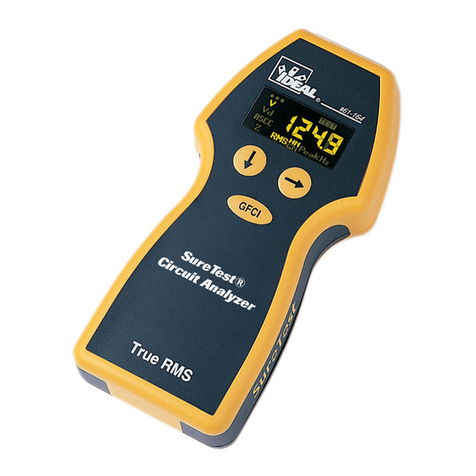
IDEAL
IDEAL SureTest 61-164 instruction manual
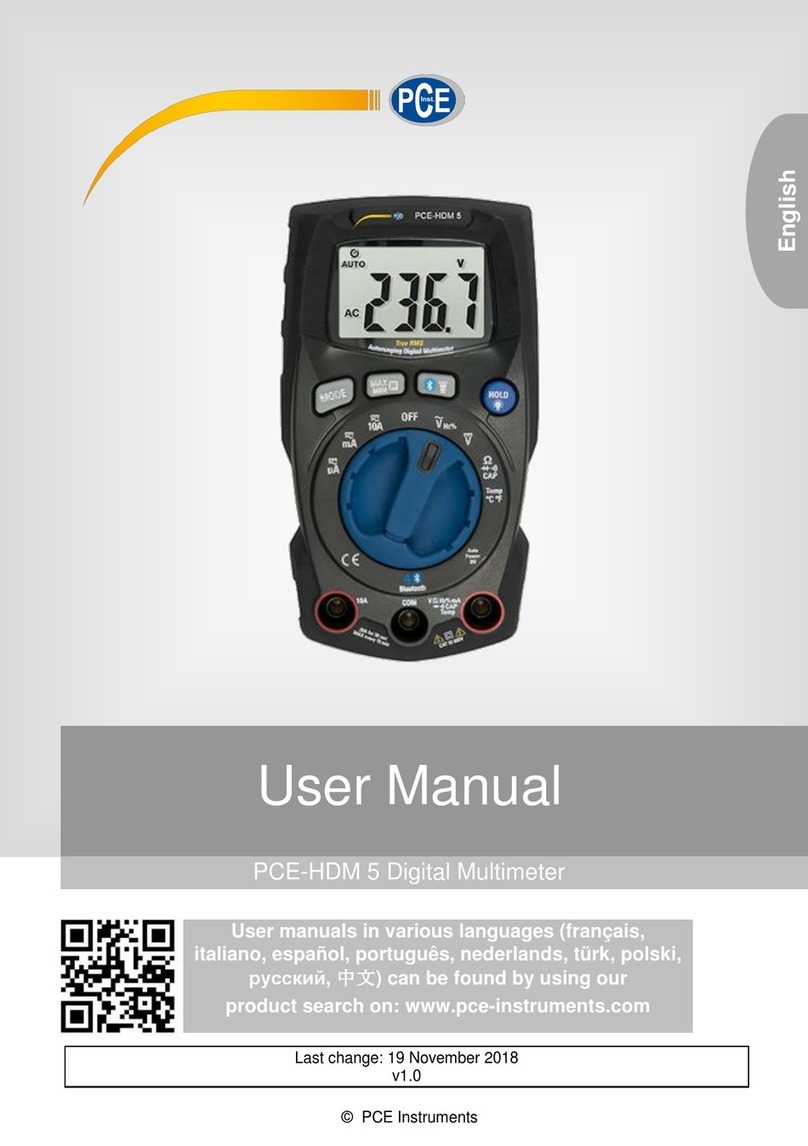
PCE Instruments
PCE Instruments PCE-HDM 5 user manual
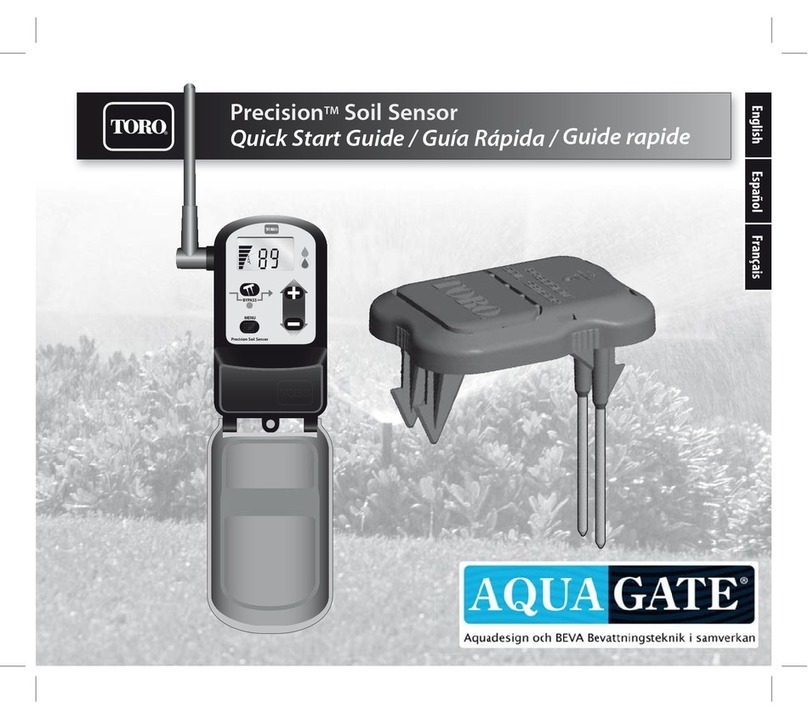
Toro
Toro Precision Soil Sensor quick start guide
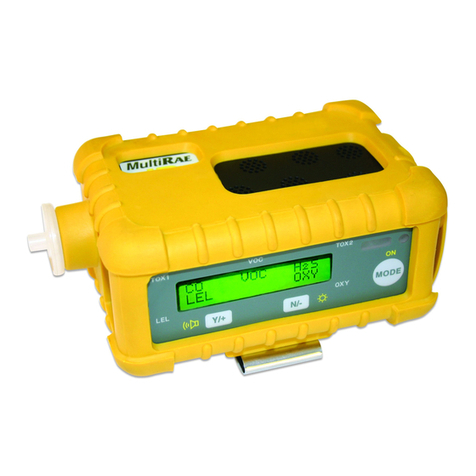
Rae
Rae MultiRAE Plus PGM-50/4 user manual

Associated
Associated 12-1015 rev-B user manual
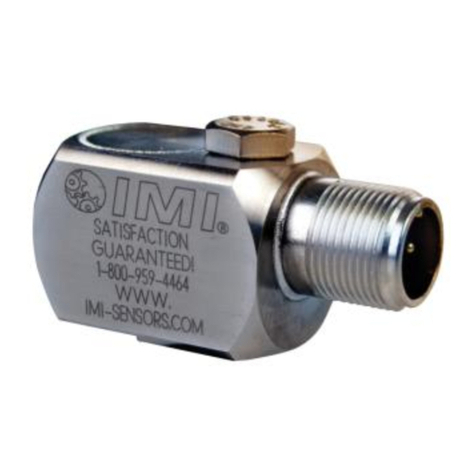
PCB Piezotronics
PCB Piezotronics IMI SENSORS HT602D01 Installation and operating manual


